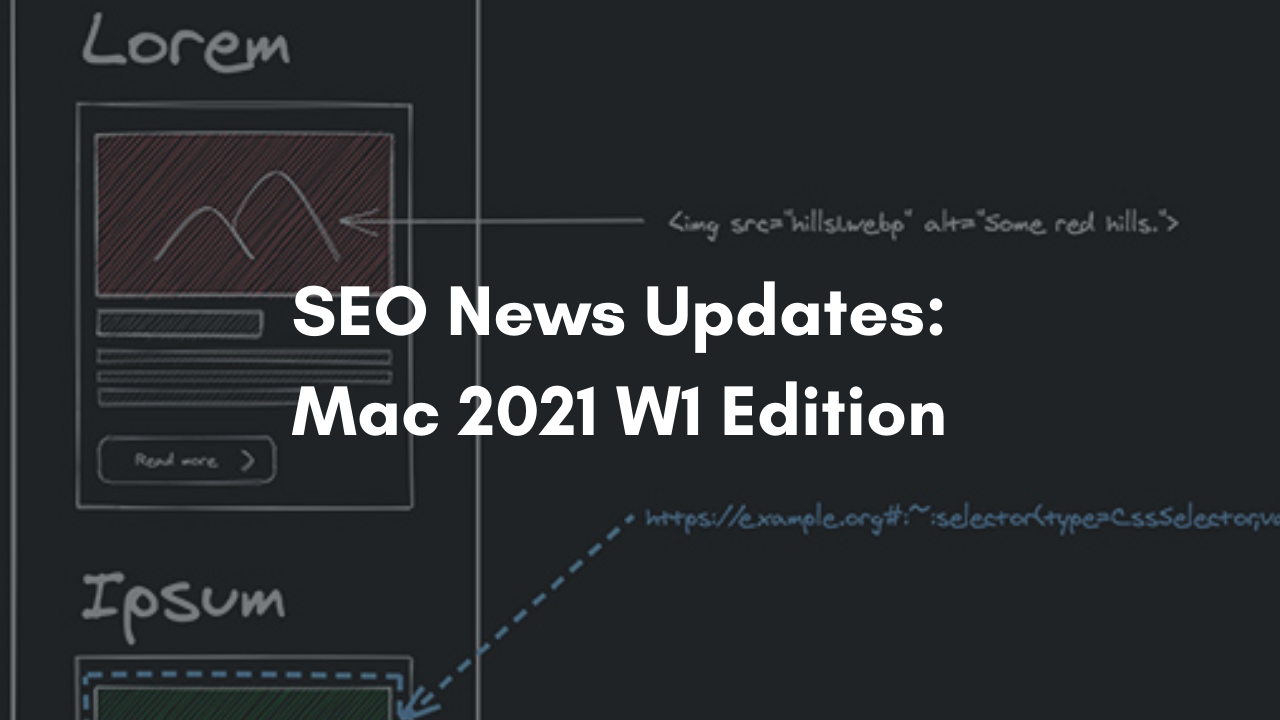Steph W. from SEOPressor


...help you check your website and tell you exactly how to rank higher?


91
score %
SEO Score

Found us from search engine?
We rank high, you can too.
SEOPressor helps you to optimize your on-page SEO for higher & improved search ranking.
By vivian on March 5, 2021

Hey SEO peeps, it’s Friday again and time for our usual weekly SEO news updates, and here’s a quick overview of what happening this week.
Now let’s dive deeper into each news tidbit.
Following scroll-to-text, Google Chrome developers have happily revealed that we’ll also soon be seeing scroll-to-image and scroll-to-video.
In a tweet, the Chrome developers have announced the text fragments team has a new project in the works that allow users to navigate to images, videos, and other elements.
Well, looks like it doesn’t. But for now what we understand is that this would work similarly to the text links, where if Google shows a video or image snippet and that image or video is clicked on from Google Search, Google might anchor the Chrome user to the specific location on the page where that image or video is located.

Google’s John Mueller was asked how someone can help Google understand which pages of a site it really wants to index.
The webmaster who asked the question said that Google was only indexing 10% or so of the site’s pages in the sitemap file and asked how does Google notate which pages are more important if it doesn’t look at the priority field in the XML sitemaps.
John said it is true that Google doesn’t really look at the XML sitemap priority field. So instead, you really need to communicate which pages are more important to you through your internal linking.
The more you link from your more important pages to other pages, the more Google will understand that the pages you are linking to on your website are important.
As a general rule, if you link to 10% of your pages from your home page, Google will likely think that 10% of those pages that you are linking to from your home page are more important than the other 90% of your pages. Of course, there are always exceptions.
Google was seen testing a search refinement feature named “see results that mention” on the right sidebar.
But now, as captured by Brian Freiesleben and posted on Twitter, Google is testing it on the left side and Shalom Goodman saw them on the top.
Here’s the previous tested right-side panel where if selected will actually filter the search results to show the more relevant ones according to the categories you ticked.
Google’s John Mueller was asked a question regarding disappearing rich results and he listed two reasons why a site may not be showing rich results in the Google Search results, which are:
So in this case, rich results are actually acting as a signal for the quality of the sites.
In a recent Search Console episode, Daniel Waisberg of Google explained how the crawl budget works with crawl demands and crawl rates.
In the video, Daniel also shared a dive into the new crawl stats report in Google Search Console. Here is the video:
Specifically, he explained how Google crawls the web and explains there are not unlimited resources to do so. So Google needs to prioritize what and when it crawls.
Note, this topic is most relevant for larger websites, not really sites with a few thousand pages or less. But here’s a quick overview:
All in all, it’s a pretty good video, so click into it to learn more and that concludes our weekly SEO news. Until net week, I hope you have a great weekend!
Updated: 29 December 2025


Save thousands of dollars (it’s 100x cheaper)

Zero risk of Google penalty (it’s Google-approved)

Boost your rankings (proven by case studies)
Rank High With This Link Strategy
Precise, Simplified, Fast Internal Linking.
